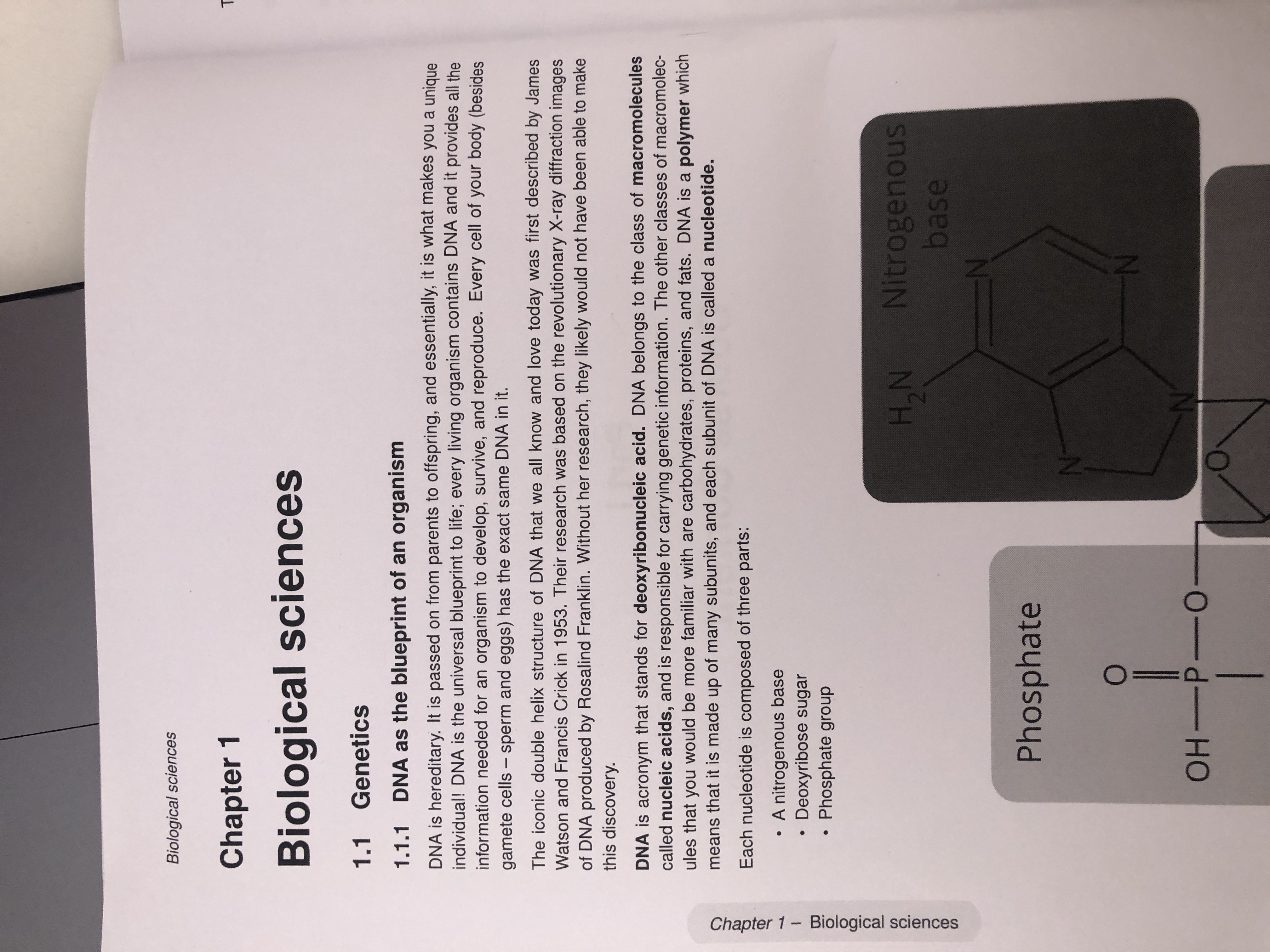What is DNA and why is it considered the blueprint of an organism?

Understand the Problem
The text explains the concept of DNA as it relates to genetics and its role as the blueprint of life, describing its structure and components.
Answer
DNA is a genetic blueprint encoding instructions for an organism's development, survival, and reproduction.
DNA is the genetic blueprint of an organism, containing instructions for development, survival, and reproduction. It is a polymer made up of nucleotides, each composed of a nitrogenous base, deoxyribose sugar, and phosphate group. Its structure was first described by Watson and Crick in 1953.
Answer for screen readers
DNA is the genetic blueprint of an organism, containing instructions for development, survival, and reproduction. It is a polymer made up of nucleotides, each composed of a nitrogenous base, deoxyribose sugar, and phosphate group. Its structure was first described by Watson and Crick in 1953.
More Information
DNA carries genetic information across generations and is vital to genetic engineering, forensic science, and understanding hereditary diseases.
Tips
A common mistake is confusing DNA with RNA, which is also a nucleic acid but functions differently in protein synthesis and regulation.
Sources
- Deoxyribonucleic Acid (DNA) - Nature - nature.com
- Deoxyribonucleic Acid (DNA) Fact Sheet - genome.gov
- Why is DNA called the blueprint of life? - Socratic - socratic.org
AI-generated content may contain errors. Please verify critical information